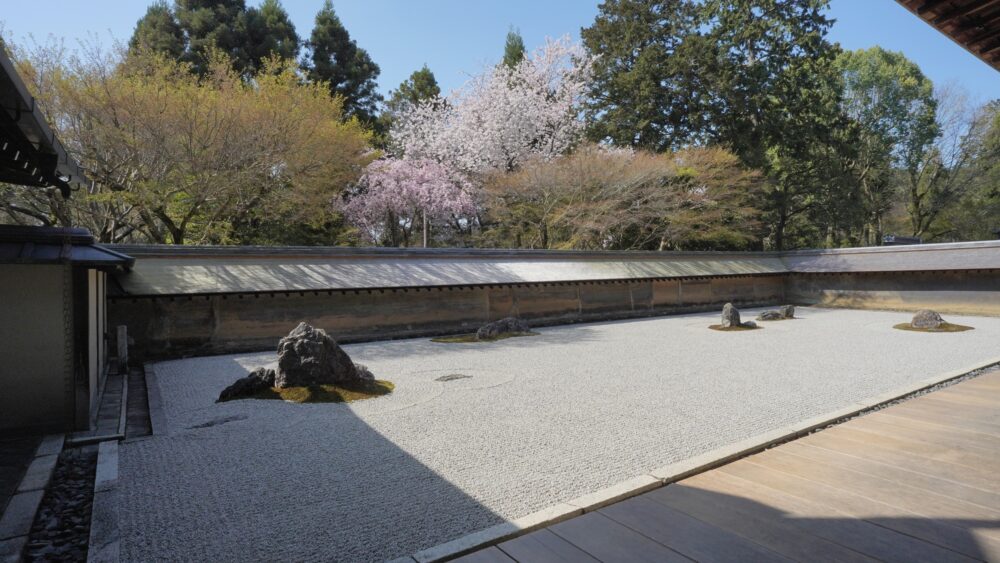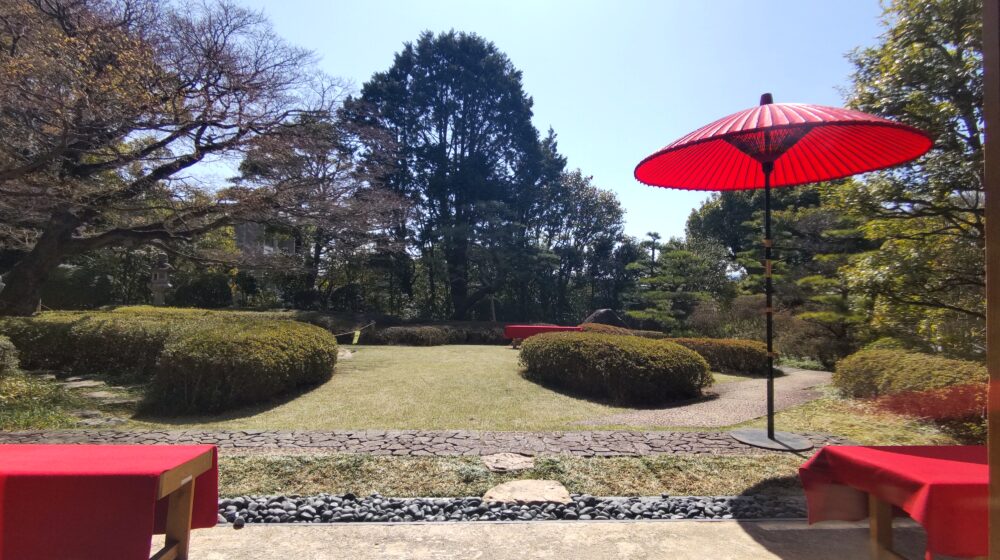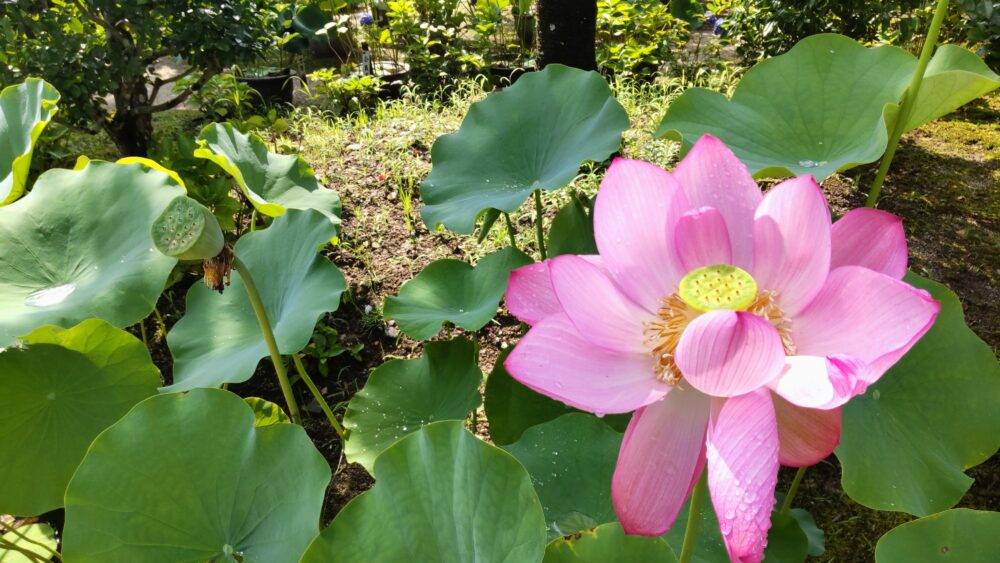The 6 elements of Japanese pond garden.
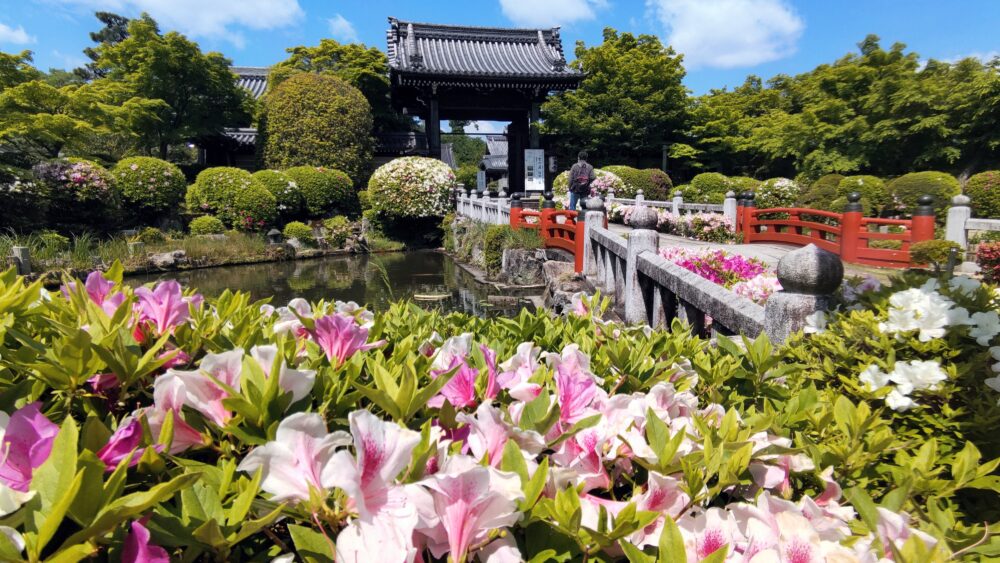
Japanese pond gardens, one of the types of Japanese gardens, have six elements: large ponds, seasonal flowering plants, water supply (streams and waterfalls), stone arrangements (pebbles and rocks), artificial hills, and background landscapes. These elements are features of old Japanese gardens, whose ideas originated in the Heian period (8th to 12th centuries). Originally created as social occasions for emperors and nobles, Japanese pond gardens are now open to the public and famous as popular tourist destinations in Japan.
Large ponds
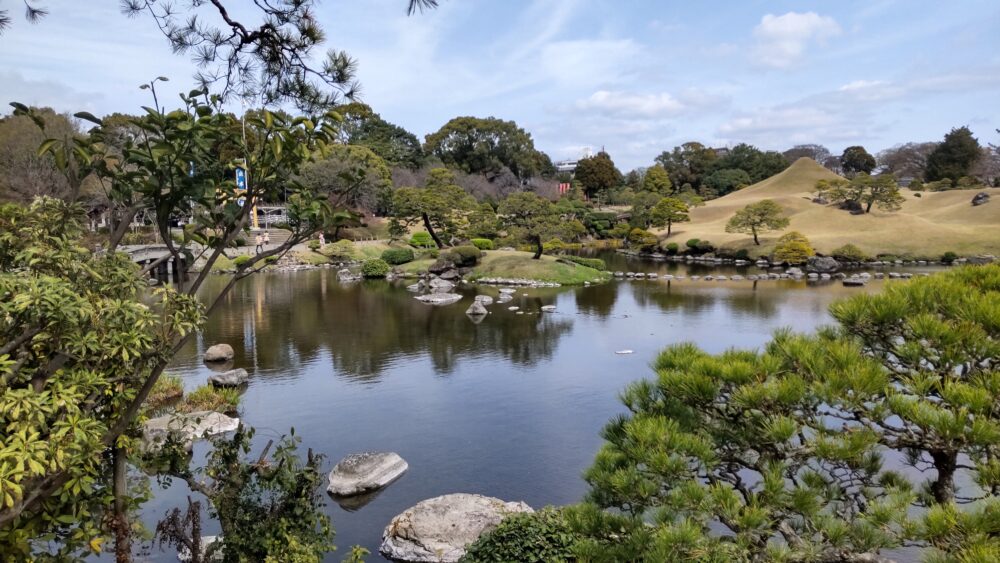
A pond is indeed the centerpiece of a Japanese pond garden. Water, essential for representing nature, is abundant in Japan with many natural springs and rivers. This allowed water to flow into gardens naturally, even before modern pumps. Wealthy garden owners built these gardens with large ponds as a display of their affluence.
These expansive designs often feature landscapes with islands connected by bridges, rocky coastlines, garden trees, and even traditional Japanese buildings. Despite their size, designers incorporated focal points through strategically placed buildings, corners, and pathway intersections. Visitors can admire the gardens’ breathtaking views from these buildings or by strolling through them. Additionally, feeding the colorful carp that grace some ponds is a delightful experience for many.
Kyoko-chi, the Mirror Pond at Kinkaku-ji Temple (Golden Pavilion), is widely recognized as one of the most celebrated and beautiful Japanese pond gardens. This expansive pond features meticulously arranged islands and rocks that symbolically represent the Japanese islands.
Seasonal flowering plants

Japanese pond gardens are known for their vibrant display of plants and trees throughout the year. Unlike other garden styles that focus on beautiful flowers, Japanese pond gardens showcase an exceptional floral display.
Each season, a variety of plants and trees bloom, including cherry blossoms, plum blossoms, camellias, azaleas, and wisteria. The ponds themselves add to the beauty with aquatic plants like irises and lotuses, which contribute their own colorful blooms. Japan has four distinct seasons, which provide a constant display of beautiful flowers. This can create a sense of tranquility for visitors.
Water supply(Streams and Waterfalls)
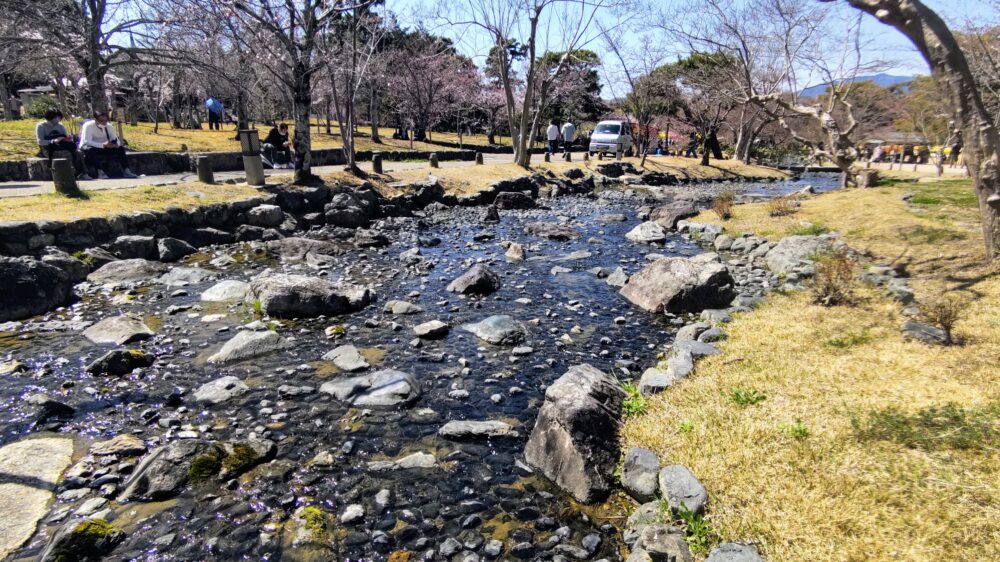
Japanese pond gardens often incorporate streams and waterfalls to keep the ponds clean and full of water, while also enhancing the overall beauty of the design. The streams wind through the garden and are adorned with randomly arranged stones, creating a natural and artistic scenery.
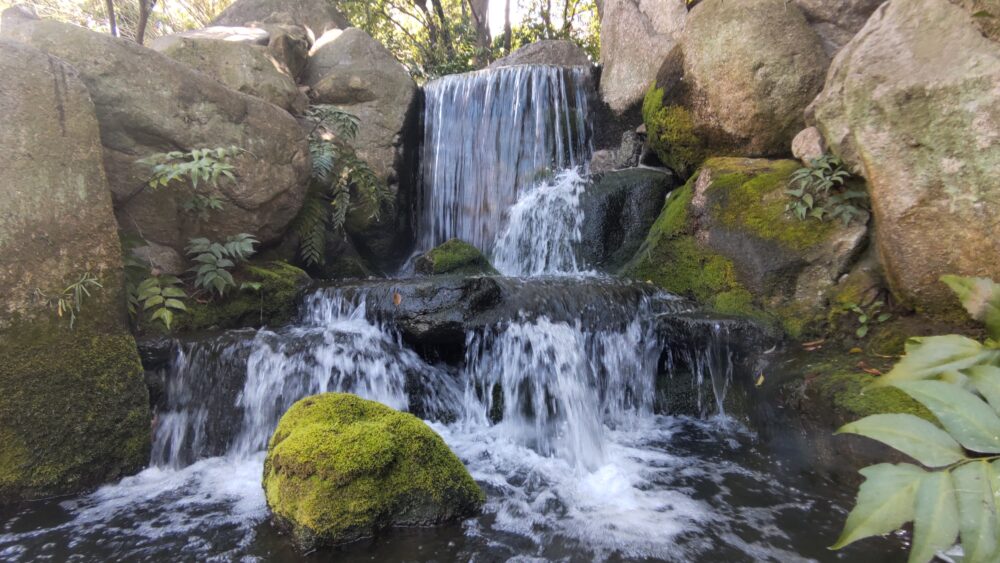
The waterfalls are also impressive features of the garden. The stone arrangements and the amount and flow of water cascading down is carefully controlled to create a variety of effects, further enhancing the natural beauty of the garden.
Stone arrangement (Pebble and Rocks)
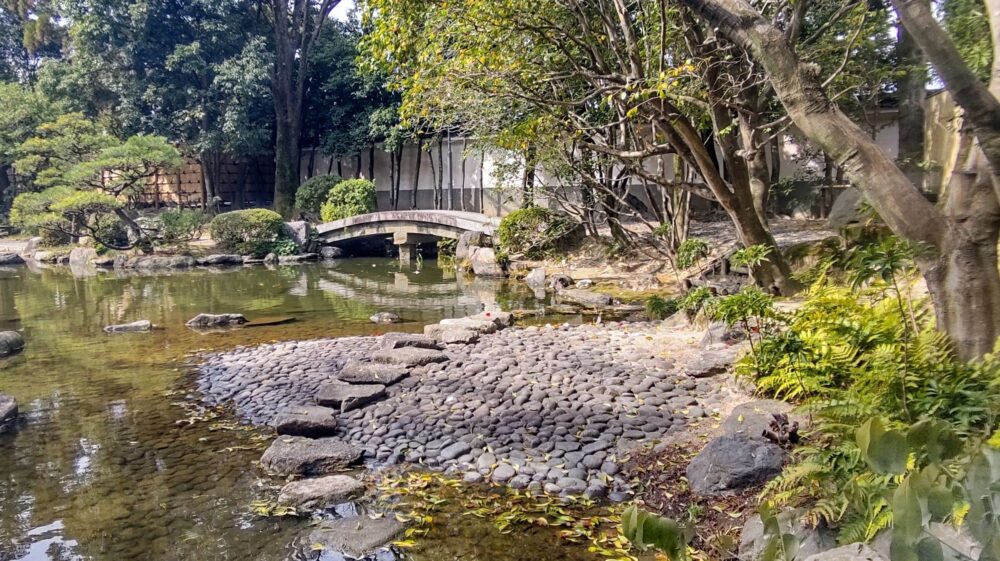
Pebbles and rocks are meticulously arranged along the banks of rivers and ponds to accentuate the appearance of a coastline. These pebble-lined shorelines, devoid of sand, are known as “Suhama” , a term that signifies beaches or coastlines with gentle waves. The deliberate placement of these stones represent the natural contours of a shoreline, creating an illusion of a tranquil coastal landscape.
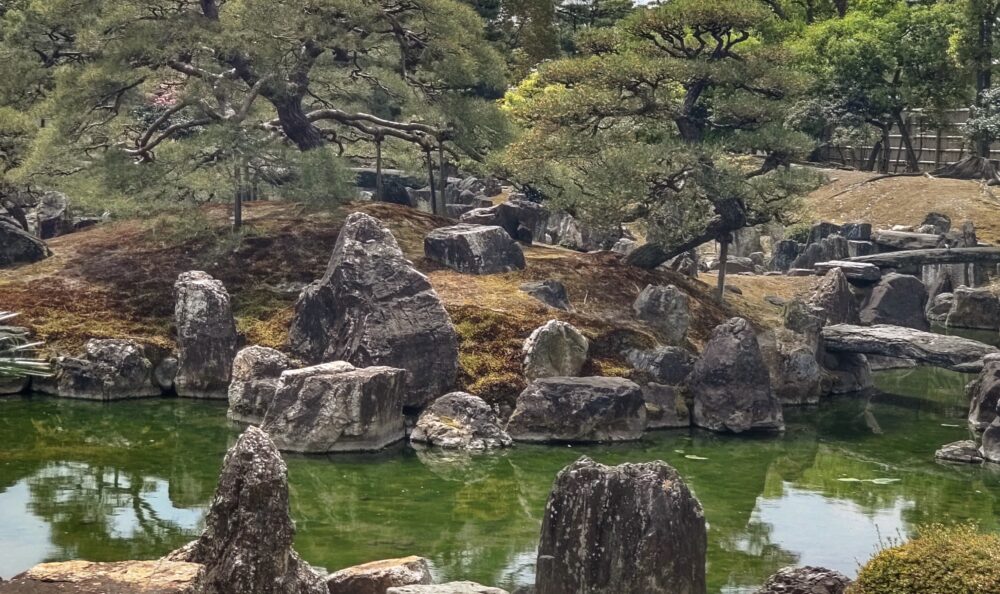
Beside ponds and streams, rocky areas known as ‘Araiso’ can be found, which represent a rugged coastline that is often battered by strong waves. These rocky beaches serve as soil-retention structures, effectively holding back and preventing soil erosion. In Japanese gardens, rocks are considered essential elements, and their meaning can vary depending on their placement.
Artificial hills
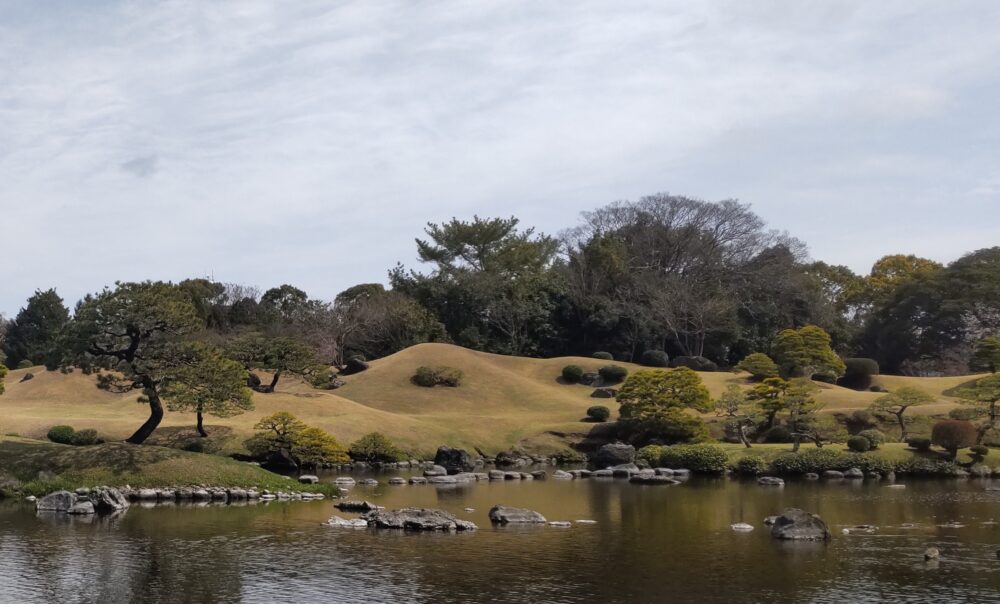
The Japanese garden is designed to create the illusion of depth and volume, despite its smaller size compared to natural landscapes. landscape designers often create ‘tsukiyama’, which are artificial hills, throughout the garden. They achieve this by using soil that has been stockpiled for this purpose, as well as earth that has been excavated for the pond.
These hills are then adorned with carefully arranged rocks to enhance their beauty and increase their height. In some cases, the artificial hills are modeled after real mountains in Japan, including the iconic Mt. Fuji.
background landscapes
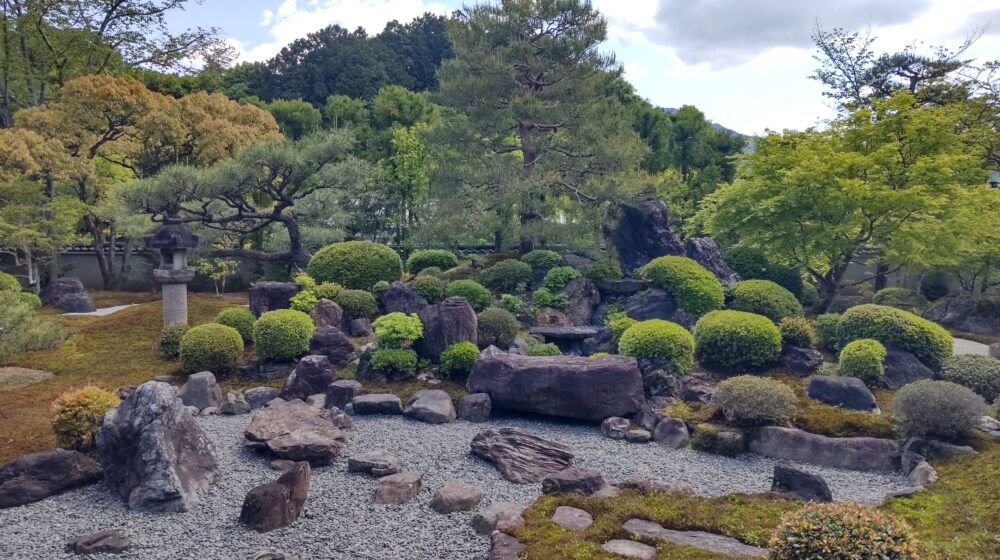
Japanese garden designs are not only in the garden. ”Syakkei” is a garden technic to borrow sceneries from background landscapes. Garden are designed with outer landscapes, such as forest areas, mountains and lakes, to make spectacular view, therefore this method extend range of garden designs. Above photo, Myoman-ji temple garden borrows the forest scenery and It has a stunning wide and distant view.
